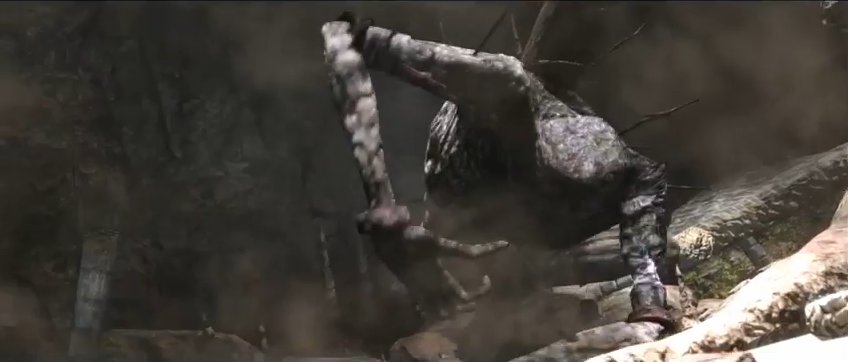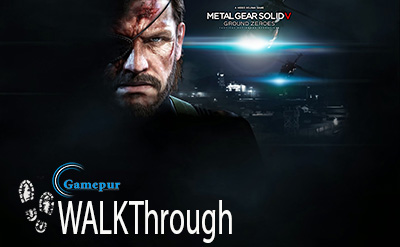

Educational games have been part of the video game culture for decades, with fondly remembered titles such as Oregon Trail and Typing of the Dead gaining cult followings since release. These so-called ‘edutainment’ games are not just a thing of the past, either; recently, plans were revealed to grant every secondary school in Northern Ireland a copy of the educational build of Minecraft for teaching purposes. Meanwhile, the US Department of Education has given support for the use of video games as learning tools.
Some games, however, fit more specific educational uses than others, and this is certainly the case with Underground. The Wii U puzzler from Grendel Games has a rather unique origin, as the title has been specifically developed to help trainee surgeons develop their laparoscopic surgery motor skills. Indeed, the game has actually been designed for use with an specially-created medical controller that acts like the tools used during keyhole surgery, with Underground aiming to train would-be doctors through a cartoonish world of robots and monsters.
Underground is set in a fantastical realm, and tasks the player with helping to free a group of cutesy androids and lead them to freedom through the dark dangers of the game’s caves. Gamers must help lead Sari, robot Sw4nk, and a number of other androids through four different game worlds, trying to escape from the threat of the game’s underworld of caverns. The game provides an interesting setting, with plenty of color and Ratchet and Clank-esque vibes.
Moving Underground away from a hospital setting covered by less educational titles such as Surgeon Simulator and Trauma Center is a bold move from Grendel Games, but one that certainly works in Underground’s favor. It would have been all-too easy to create a complex version of Operation with additional Wii U bells and whistles, but the developer has avoided the farcical nature of certain hospital-based titles by moving away from a realistic setting. It also provides players with a lot more variety in terms of just how to use the game’s fairly unique mechanics.
Indeed, Underground has a control scheme like few other games on the market. Rather than taking on the direct role of any of the androids, instead the player is tasked with the control of a pair of robotic arms, distant from the action below. Using these extendable limbs, gamers must adapt the environment to free the allied robots and lead them to a safe escape, fixing routes and drilling through blocks.
It makes the player feel more like a brotherly figure, guiding the vulnerable robots through levels and watching out for additional hazards. Underground has similarities to classic puzzle series Lemmings in this regard, where the difficulty comes not just from the immediate dangers on show, but from what else can appear over the course of the level. It leads to the player thinking several steps ahead throughout a map, and Underground is a game that certainly requires some tactical thought.
The strategic mindset is particularly necessary due to the game’s control scheme, as the player controls each of the robot arms with separate analog sticks on the Wii U gamepad. The robot arms themselves aim to emulate the tools used during keyhole surgery, acting almost as robotic, malleable fingers. It’s an interesting move from Grendel Games, and one that is bound to feel a little alien to the player.
A design decision such as this can go either way, with the hilarious mess of Surgeon Simulator or the impressive, reaction-based mechanics of Grow Home. Thankfully, Underground is closer to Ubisoft’s recent title, although there is still plenty of ground for frustration. Precision placement is required to pull off some of the environmental changes, and sometimes it is obvious that Underground has been envisaged for use with the aforementioned medical controller.
Grendel Games does provide gamers with a gentle slope into Underground’s depths, however, as there are several tutorial levels to ease players into the mechanics. Although it’s not a fluid progression from becoming a new user to adept with the controls, due to the amount of text to read and the miniature-sized tutorial levels themselves, it is nonetheless necessary for the player to gain a better understanding of how to control the arms and the different tools on show. Players can use a welding tool, power drill, and a grabbing mechanism, but each of the tools has several different uses and explanation is necessary for new users. It may be a little clunky, but the developer does succeed in making Underground’s basic gameplay clear.
That clunkiness is an unfortunate curse of Underground in general, however, with a lack of polish that could put some players off. Although some of the gameplay is sound, with easy switching between the three arm tools via the Wii U gamepad, the controls can be fairly awkward. This is particularly true regarding movement; the player may be controlling a suspended, robot-armed mechanical platform, but more fluidity would have been welcome.
Some of the awkward movement mechanics also come from the game’s viewpoint, which falls somewhere between isometric and top-down. Unfortunately, this means that depth perception can sometimes be a little off. This is a particularly frustrating flaw of Underground, as it means the player’s use of the extendable arms is not as precise as the game requires it to be, resulting in failed attempts to drill in a particular spot due to not quite knowing where the robot arm will fall.
Aside from the viewpoint, the graphics are more than passable considering that this is a Wii U eShop title. There is no wow factor to the game’s art, but Underground builds a colorful and engaging world, with cute robot allies and cartoonish monsters. The title gives the player a world that they will enjoy exploring, easy on the eye whilst at the same time making damaging environmental effects and enemies obvious on the game’s boards.
That simple but effective development choice continues into the game’s story. Underground has a rudimentary narrative – help Sari and Sw4nk escape from the dangerous mines – but it is framed in a way that holds the player’s interest. The story is told primarily through cut scenes, free from the constraints of dialogue and instead relying upon the actions of characters and the sweeping, orchestral score. It’s an effective design choice, and one that gives Underground some kind of emotional depth that is rare in a puzzle game of this nature.
When all is said and done, however, puzzle games have to rely on their gameplay and mechanics to prove themselves. Underground succeeds in providing players with an interesting challenge, and the unusual control scheme makes users immediately sit up and pay attention. There are some flaws along the way, with some particularly serious problems with the game’s camera and clunky controls in general, but Grendel Games has created one of the most interesting educational titles on the market, and one that will also give mainstream video game players something to think about.
Underground is out now for Wii U. Game Rant was provided a Wii U code for this review




 The Wonderful 101 Walkthrough
The Wonderful 101 Walkthrough Insurgent: Soundtrack of the film will be released this March 17
Insurgent: Soundtrack of the film will be released this March 17 How to complete Saints Row: Gat out of Hell Achievements, Complete list for Xbox One
How to complete Saints Row: Gat out of Hell Achievements, Complete list for Xbox One Metal Gear Solid V: Ground Zeroes Walkthrough : Campaign and Side Ops Missions
Metal Gear Solid V: Ground Zeroes Walkthrough : Campaign and Side Ops Missions Game of Thrones Games That Need to Exist Already
Game of Thrones Games That Need to Exist Already